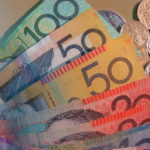Gold remained pressured by the recovering US economy this week, with reports on employment, activities in the services sector and labor costs boosting both the dollar and equities apettite. Ukraine kept a check on losses, however, with inconclusive battles between government forces and rebels. Furthermore, the pro-Russian regions of Donetsk and Luhansk will hold an independence referendum on Sunday, stoking safe haven demand.
Gold futures for June closed at $1 287.6 per troy ounce on Friday, for a daily loss of 0.01% and a weekly 1.17% decline. Weekly high and low stood at, respectively, $1 315,8 per troy ounce on Monday, when Eastern Europe heated up, and $1 284.8 per ounce on Thursday, as the Kremlin proposed lowering aggression.
This week saw a number of reports add to positive outlooks for the US economy, which in turn pressured gold.
On Monday, ISM’s non-manufacturing April PMI revealed a standing of 55.2, beating forecasts and reaching the highest figure in 6 months. The standing indicates that services, which represent the bulk of US GDP, have gained momentum and are growing more quickly.
Thursdays report on jobless claims, a significant indicator for the health of the US economy, revealed unemployment figures had scored better than expected for the week through May 3rd. Initial claims were at 319 000, down from a revised 345 000 for the previous week, while continuing claims had shrunk to 2.685 million from 2.761 million the previous week.
Also on Thursday, the euro slid against the dollar as ECB President Mario Draghi indicated a possible easing of monetary policy in the Eurozone, should inflation remain below the targeted 2% figure. The euro is the greenbacks main competitor, and when it goes down the dollar rises, which in turn increases the price of dollar-denominated goods, such as gold, and lowers their investment appeal.
Holdings at the SPDR Gold Trust – the largest gold-backed exchange-traded fund, reflected the pressure by the recovering US economy, as they remained at the lowest levels since early 2009 at 782.85 tons.
Fomenting positive outlooks to some extent, Federal Reserve Chair Janet Yellen said the central bank will continue to support the economy, arguing that employment and inflation remain below targeted figures.
“Yellen made it clear that tapering will continue,” said for Bloomberg Tommy Capalbo, a broker at Newedge Group in New York. “Gold is getting some support from political tension, but other than that, there is little interest.”
Ukraine
Yesterday Russia celebrated 69 years since the victory over Nazi Germany. Moscow witnessed a massive military parade, displaying both hardware capabilities and patriotic fervor. Later in the day Russian President Vladimir Putin flew to the Crimea to attend the parade in Sevastopol. The move was widely condemned by the West and in Ukraine, calling it “regretful”, “inappropriate”, “provocative and unnecessary” and a “gross violation of Ukraines sovereignty”.
Mr Putins first visit to the disputed peninsula erased earlier signs that Moscow was taking steps to deescalate the crisis in Ukraine. On Wednesday, President Putin himself asked rebels to postpone a planned independence referendum and withdrew troops from the border.
Meanwhile, tensions are on the rise in eastern Ukraine, as an independence referendum is taking place on Sunday in the Russian-speaking regions of Luhansk and Donetsk. Rebels disregarded Mr Putin’s pleads to postpone the vote, and said the poll will go ahead as planned. “The referendum will take place on 11 May. We are getting ready, ballot papers are being printed, everything remains in force. Nothing will change, it will not be delayed,” pro-Russian rebels in Luhansk were quoted as saying.
Mariupol, a town in the Donetsk region, was the scene of heavy fighting yesterday, which left at least 20 rebels and 1 military officer dead, Ukraines Interior Minister Arsen Avakov said.
Previously, battles between government troops and rebels resulted in the deaths of at least 4 soldiers and, reportedly, more than 30 rebels in the rebel-held town of Sloviansk. The city remains blockaded.
Outlook
In addition to developments in Eastern Europe, next week will feature a number of important economic reports, which would impact gold.
Early on Tuesday, a report on industrial production for April in China is projected to show the sector has grown by 8.7-8.9% on an annual basis, in line with the figure from last year of 8.8%.
Later in the day, US retail sales for April are forecast to have added 0.4%, down from an upward-revised 1.2% growth for March, while core retail sales are expected to show a 0.6% growth after 0.7% the previous month.
On Wednesday, the Eurozone will post industrial production results for the month of March. Analysts predict a 0.3% monthly contraction and a 1.0% annual growth. Earlier on Wednesday, Germany, France and Spain are expected to reveal CPI for April. Germanys reading is forecast to have dropped 0.2% for the month, and added 1.3% on an annual basis. France is to show 0.1% growth for the month and 0.9% for the year, while Spain is projected to report an increase of 0.6% for the month and 0.3% annually.
Also on Wednesday, the Producer Price Index for April in the US will be revealed. Experts suggest sellers have increased their prices by 0.2% from a month before, and 1.7% from a year ago.
Thursday will feature GDP data from Germany and France, and CPI in the Eurozone, in addition to growth in the Bloc. France is expected to unveil 0.1-0.2% quarterly growth for Q1 of 2014, behind 0.3% for the previous three months, while Germany is set for 0.7% growth for Q1, after 0.4% the previous quarter. Meanwhile, the Eurozone as a whole is predicted to have added 0.4% to the economy for the first quarter of 2014. More importantly, Aprils consumer inflation (CPI) for the Bloc is to be revealed, with forecasts of 0.2% monthly rise in prices and a 0.7% annual growth.
Later on Thursday, the US will also report important figures. Core CPI, which excludes the volatile food and energy costs, is forecast to have added 0.1% on a monthly basis for April, after 0.2% for March, while annually the growth would be at 1.7%. The Philadelphia and New York manufacturing gauges for May are projected to stand at 14.0 and 6.0, respectively, from 16.6 and 1.29 the previous month, indicating slightly worsening business conditions in Phillie and improvement in New York.
Lastly, on Friday the US will log major housing data. Forecasts show building permits in April probably grew by 1.8% on a monthly basis, after dropping the previous month. Housing starts are also expected to have added 4.1%.
Technical view
According to Binary Tribune’s analysis for Monday, in case Gold June futures manage to breach the first resistance level at $1 292.9 on Monday, the contract will probably continue up to test $1 298.2. In case the second key resistance is broken, the precious metal will likely attempt to advance to $1 301.9.
If the contract manages to breach the first key support at $1 283.9, it will probably continue to slide and test $1 280.2. With this second key support broken, the movement to the downside may extend to $1 274.9.





